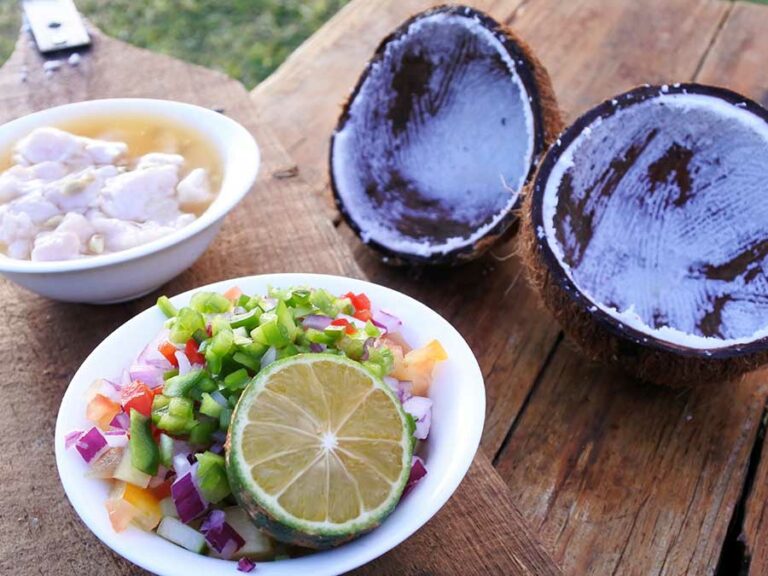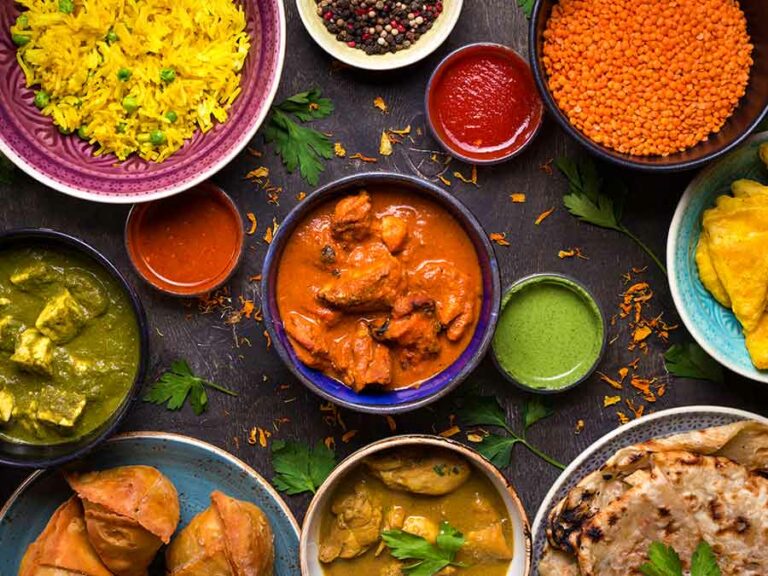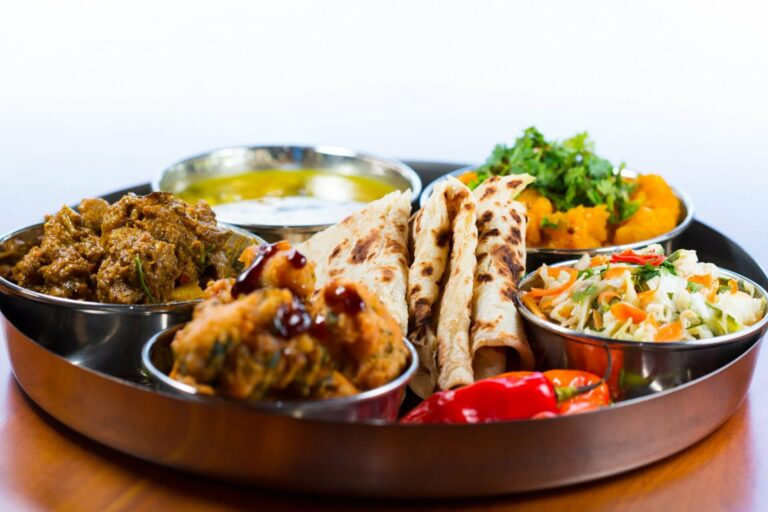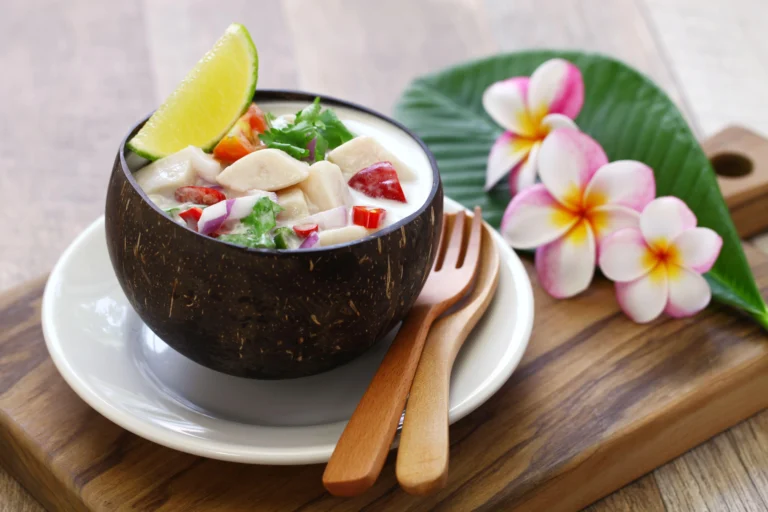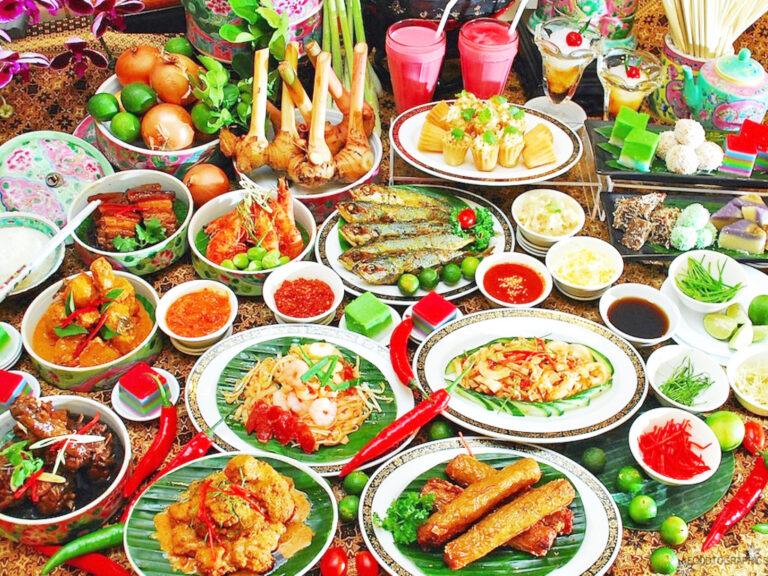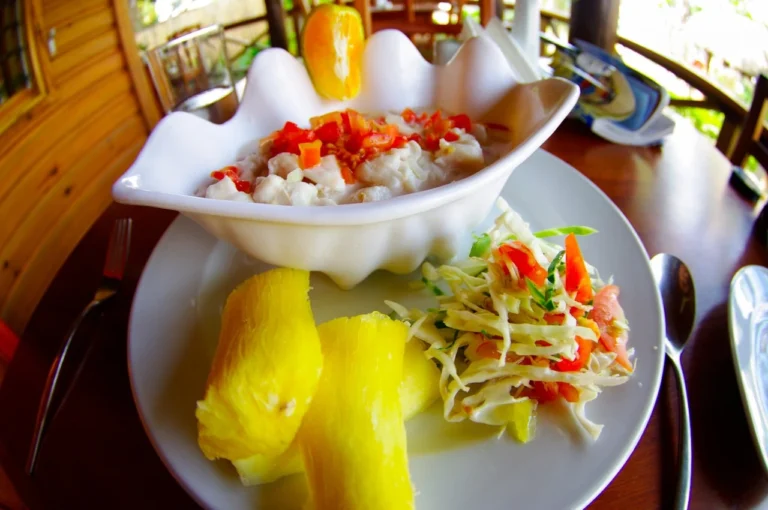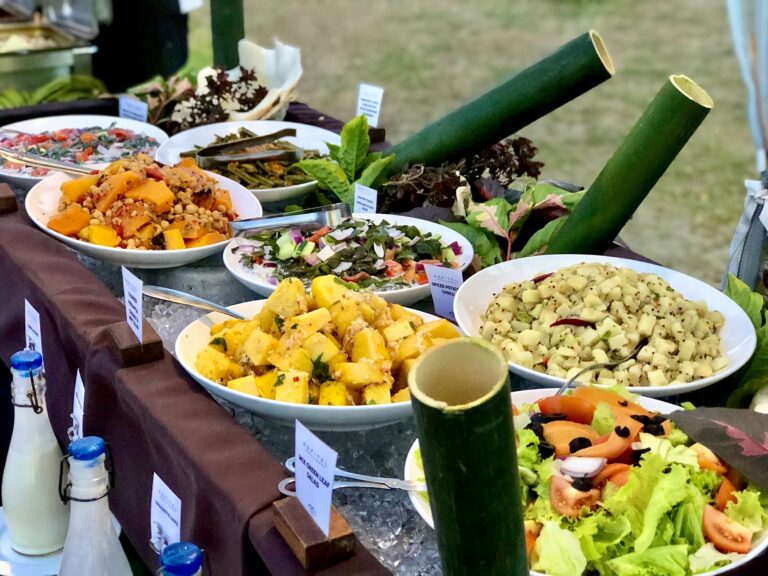Introduction: Fijian Street Food
When it comes to street food, Fiji has a lot to offer. The island nation is famous for its melting pot of cultures, which has led to an eclectic mix of dishes influenced by Indian, Chinese, and Pacific Islander cuisines. From savory snacks to sweet treats, Fijian street food is a must-try for any food enthusiast.
1. Lovo: Fijian Earth Oven Cooking
Lovo is a traditional Fijian cooking method that involves slow-cooking meat, fish, and vegetables in an underground oven. The food is wrapped in banana leaves and buried in a pit lined with hot stones. The result is a smoky, tender, and flavorful dish that is a staple at special occasions and events. Some popular lovo dishes include kokoda (raw fish salad), cassava, and taro.
2. Kokoda: Raw Fish Salad
Kokoda is a refreshing and healthy salad made with raw fish marinated in lime juice and coconut cream. It is a popular dish in Fiji and can be found at almost every street food vendor. The dish is usually served with cassava chips or breadfruit, and sometimes even with a side of chili sauce for an extra kick of flavor.
3. Vakalolo: Coconut Pudding
Vakalolo is a sweet dessert made from grated coconut, cassava, and sugar. The mixture is wrapped in banana leaves and steamed until it forms a pudding-like consistency. It is a popular dessert in Fiji, especially during festive occasions such as weddings and birthdays.
4. Roti: Indian-Influenced Flatbread
Roti is a type of flatbread that is popular in Fiji due to its Indian influences. It is made with flour, water, and oil, and is usually served with curry or chutney. Roti is a staple food in Fiji and can be found at most street food vendors.
5. Cassava: Versatile Root Vegetable
Cassava is a versatile root vegetable that is used in many Fijian dishes. It can be boiled, fried, or mashed and is often served as a side dish with meat or fish. Cassava chips are a popular snack in Fiji and can be found at most street food vendors.
6. Sweets: Wai Lolo and Namosi Cake
Wai Lolo is a sweet Fijian drink made from coconut cream, water, and sugar. It is often served at special occasions such as weddings and birthdays. Namosi cake is another popular sweet treat in Fiji. It is a type of sponge cake made with coconut cream and sugar and is often served with tea or coffee.
7. Samosas: Indian Snacks in Fiji
Samosas are a popular Indian snack that has made its way to Fiji. They are triangular-shaped pastries filled with spiced potatoes, peas, or meat, and are usually served with tamarind or mint chutney. Samosas are a popular street food in Fiji and can be found at most street food vendors.
8. Taro: Staple Root Crop Dish
Taro is a staple root crop in Fiji that is used in many traditional dishes. It can be boiled, mashed, or fried and is often served as a side dish with meat or fish. Taro chips are a popular snack in Fiji and can be found at most street food vendors. Taro is also used to make a traditional Fijian dish called Rourou, which is taro leaves cooked in coconut milk.


